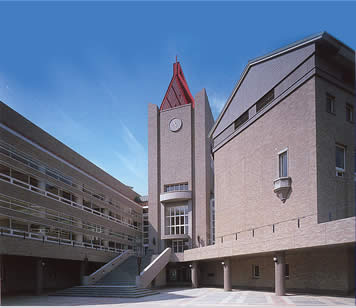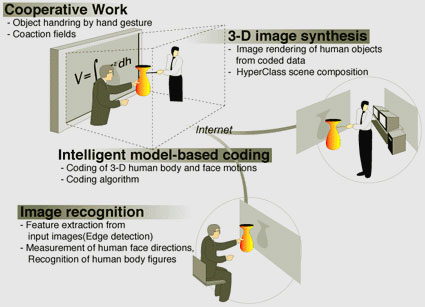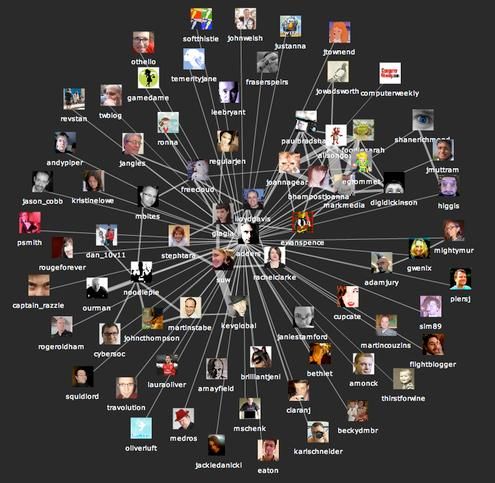
RESEARCH AREA
Cloud Computing Technology Cyberspace Share Technology OpenSocial API(Ex:Social Networking Services) Abstract "Cloud computing" has increasingly become a term that people are concerned, because it represents the future of the information age. So, what is cloud computing ? What is the use of cloud computing?How will it change the world?Here there are many issues waiting for answers. Although many issues are now may not have complete answers, but this article tries to analyze the origin of cloud computing and cloud computing with the grid computing, Web2.0, ubiquitous computing relationship to illustrate the history,development and future of cloud computing. The first scholarly use of the term “cloud computing” was in a 1997 lecture by Ramnath Chellappa.In 1983,Sun Microsystems made "The Network is the computer".Until around 2006, Cloud Computing the word began to appear occasionally in the media magazine. March 2006,Amazon released Elastic Compute Cloud- EC2 service. August 9, 2006, Google Chief Executive Officer Eric Schmidtfirst proposed the concept of Cloud Computing at the Search Engine Conference (SES San Jose 2006).The end of 2007, Cloud Computing the frequency is increasing rapidly. Google and IBM promoted cloud computing project in the U.S. college campuses, including Carnegie Mellon University,MIT, Stanford University, University of California at Berkeley and the University of Maryland, etc., , IBM and Google, two companies each to contribute 2000 to 2500 million U.S.dollars.Provided approximately 400 advance about the computer, and plans to eventually place a total of more than 4,000 computer equipment. These computers connected with six universities, including University of Washington in Seattle, the University take part as thelead research and development programming. This project hopes to reduce academic research costs of the distributed computing technology, and provide relevant software and hardware equipment and technical support for these universities. (Including hundreds of personal computers and Blade Center and System X servers,these computing platform will provide 1600 processors, support includes Linux, Xen, Hadoop and other open-source platform). The Students can develop the web-based large-scale computing research projects. In early 2008,Cloud Computing in the Chinese language began to be translated as “云计算”or“曇端計算”.(1)Source of cloud computing - Amazon EC2 product In fact, Em2 product launches than IBM, Google early. Although Amazon EC2 is a heavyweight product in the cloud computing market.But in 2006 and 2007, the Amazon's own influence is very limited in the world.So the Amazon EC2 cloud product to the popularity of the concept is less than IBM-Google project attention. But this does not prevent the EC2 cloud computing products as a pioneer status in the world. Although the early development of the concept of cloud computing, Amazon on the popularity of the concept of little contribution, but with the development of cloud computing,Amazon's strength and the level is higher than the IBM and Google from the beginning in the cloud computing areas. August 2006, Amazon released EC2 Beta version of the product, had previously published another important product S3.EC2 is an abbreviation of Elastic Compute Cloud.S3 means Simple Storage Service.The release time of EC2 called Simple Compute Service is not the name of a class, but the product name into the Cloud,Cloud is recognized as an alternative to the concept of service.Of course, called Elastic Compute Cloud Computing is clearly inappropriate. The original reports on the EC2 product launches,including one to the title as the "Amazon Cloud Computing goes Beta", most of the other described as Utility, Elastic, Virtualized. October 2007, with IBM and Google are some of the projects themselves as cloud computing, cloud computing began to spread rapidly (within limited IT). At that time, IBM, Google parallel computing project is still in the research and scientific purposes, the customer only to find EC2 is a very commercial cloud computing product. As Amazon's AWS products include a lot of cloud computing services, which also laid the Amazon as a cloud computing market leader position.
(2)Definition of Cloud Computing Cloud computing, this is a very cool web application model. The proposal of the concept,to overturn the traditional concept of the Internet world.Cloud computing refers to the narrow IT infrastructure, delivery and usage patterns, refers to the network to on-demand, and scalable way to get the necessary resources; generalized cloud computing refers to the mode of service delivery and use of means to on-demand through the network,Easy way to obtain the necessary expansion of services. This service can be IT and software, Internet-related,can be any other services, it has a very large scale, virtualization, security, reliable unique effect. References: (1) http://en.wikipedia.org/wiki/Cloud_computing (2)Michael Miller, 《Cloud ComputingWeb-Based Application that Change the Way You Work and Collaborate Online 》China Machine Press, May 2010.PP: 12-15 (3)John W.Rittinghouse,James F.Ransome 《Cloud Computing –Implementation,Management,Security》 China machine press,2010.05 .charpter 7,p124. (4)http://gihyo.jp/design/serial/01/tcloud/0004 (5) http://en.wikiquote.org/wiki/Bill_Gates (6)http://www.netvalley.com/archives/mirrors/davemarsh -timeline-1.htm (7) http://www.slideshare.net/DSPIP/cloud-computing- introduction-2978287 (8)http://www.cioinsight.com/c/a/Strategic-Tech/Cloud- Computing-Anything-as-a-Service/ (9) http://itknowledgeexchange.techtarget.com/data- center-facilities/tag/google-data-center/ (10) http://www.focus.com/articles/hosting-bandwidth/ top-10-cloud-computing-trends/ (11)Yang Wenzhi《Cloud Computing Technologies and Architecture 》Chemical Industry Press of China.2010.10. .charpter 3,p43-76;charpter 7,p227-240. (12)Zhang Weiming,TangJianFeng, LuoZhiguo. 《Cloud Computing》China Science Press.2010,01. charpter 4,p104-107. (13)Jan Van Dijk《The Network Society》Second Edition. SAGE Publications.2006. charpter 3,p58.

